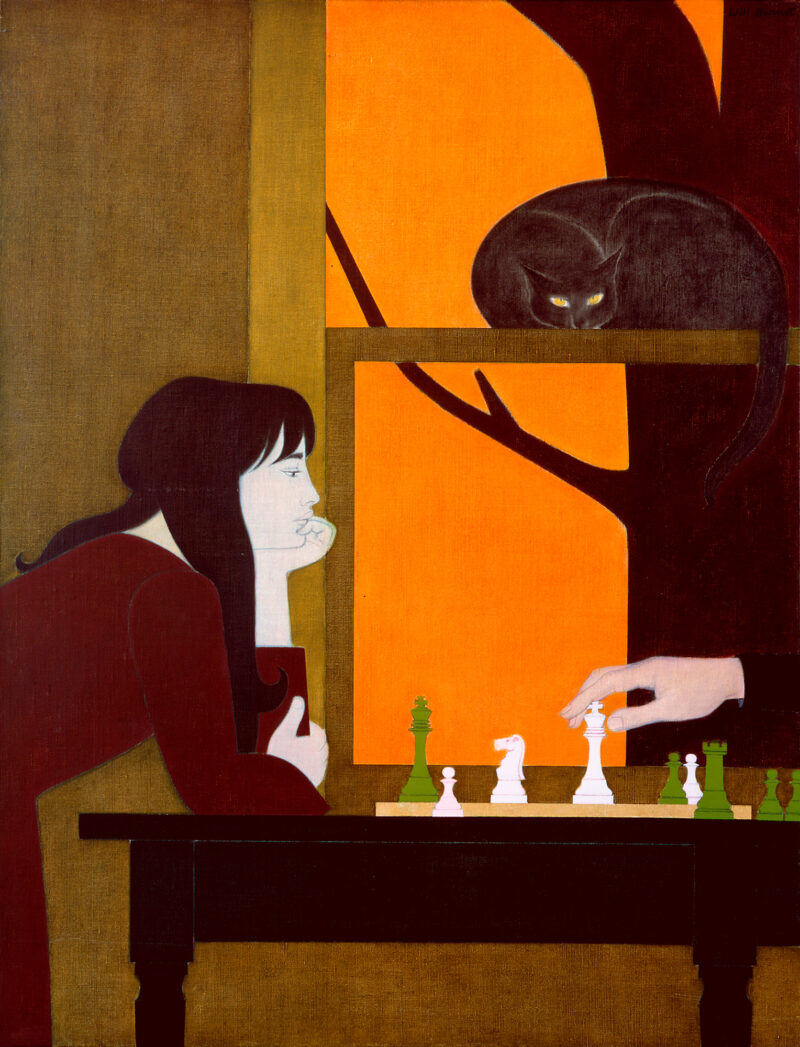
Chess Game
Barnet, Will
1973
Artwork Information
-
Title:
Chess Game
-
Artist:
Barnet, Will
-
Artist Bio:
American, 1911–2012
-
Date:
1973
-
Medium:
Oil on canvas
-
Dimensions:
43 1/4 x 33 inches
-
Credit Line:
Wichita Art Museum, Museum purchase, Friends of the Wichita Art Museum
-
Object Number:
1983.4
-
Display:
Currently on Display
About the Artwork
For over half a century, Will Barnet has been actively engaged as both a printmaker and a painter of considerable renown. And throughout his long career, he has been one of America’s most progressive artists. He devoted the early years of his professional life to the production of works consisting of representational images that strongly comment on the tragedies of the Great Depression years. But during the 1940s and 1950s, he turned to non-figurative abstraction.
Barnet’s abstract period was an experimental period, for it was during this time that his compositional interests were focused largely on the integration of shapes which stretch vertically and horizontally across a frontal plane, thereby markedly reinforcing the flat two-dimensional character of the picture surface itself. This was a vitally significant period in Barnet’s career, for the result of his abstractions culminated in a return to the representational rendering of fully recognizable figures by the early 1960s and thereafter. But his style then and now in no way resembles realism as we tend to think of the term. Instead, Barnet has established a new realism of tremendous aesthetic significance, and one of his finest achievements in his new realist manner is this 1973 oil on canvas titled Chess Game.
Here the subject is fully understandable: a young girl seen at the left concentrates on the move of her competitor, unseen but for his extended hand at the right, as the two engage in a serious chess game. Above, resting on the rail of a window, is a black cat which looks more directly at us as spectators than at the game taking place below. But the subject is of relatively little significance in comparison with the formal dynamics of the painting itself. Indeed, here Barnet’s statement is his declaration of an aesthetic truth: that the most fundamental and characteristic reality of a painting is the physical flatness of its surface. In this work, the entire composition constitutes the avoidance of any deception of depth. All figures adhere tightly to the surface plane, for little modeling exists and colors are evenly applied and unarticulated. The reality of the surface is reinforced by virtue of Barnet’s allowing the dominant figure to bleed off the left edge and by introducing the form of an arm and hand which stretches onto the surface from outside the composition. Moreover, although by tradition the spectator’s eye is conditioned to interpret spatial depth, the use of advancing warm red-orange color in the central area of composition, including the tall window and the sky above, forces that area back onto the surface, thus avoiding spatial illusion.
This work then is exciting by virtue of the implicit truth of the reality of the flatness of any painting. In addition, the work is a return to the basic belief and stylistic usage found in both Egyptian and early Greek drawing, formal echoes of which we see in the strong linear treatment and, more particularly, in the profile head of the beautiful young chess player.